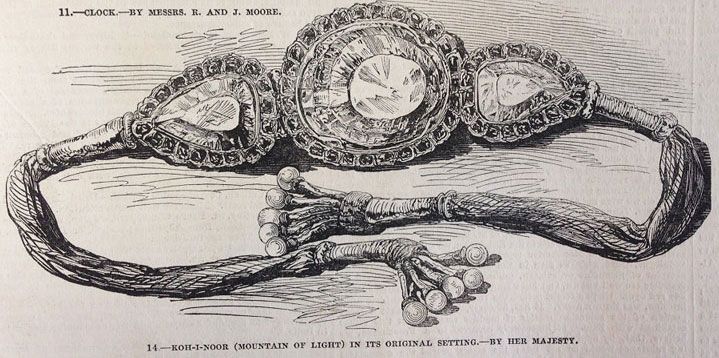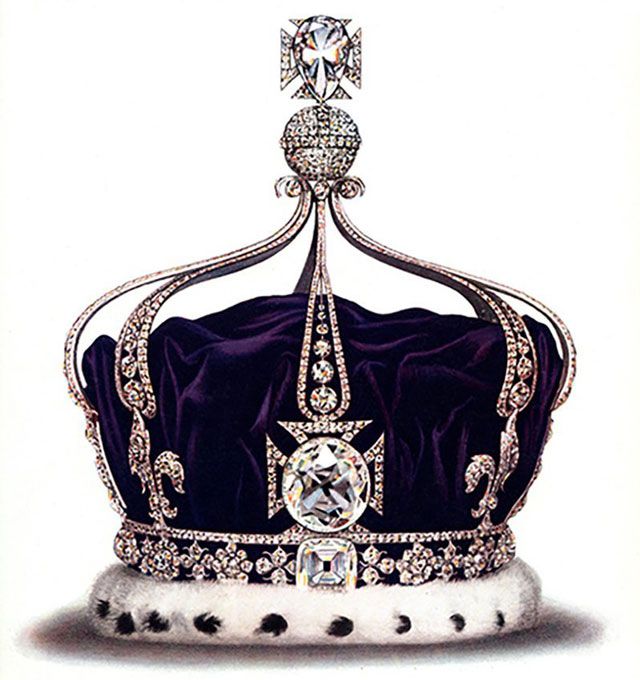The sad demise of Queen Elizabeth II is being felt upon the whole world. There are pictures of the queen in all its glory wearing the crown everywhere you see. It has been the iconic image of Queen Elizabeth II that will be remembered. What a life she led.
This article is not about the queen entirely, there are plenty of well written versions out there. This is about the majestic crown that she wears and specifically the diamond embedded in the crown, the Koh-i-Noor.
The name doesn't sound too British, because it is not. In fact, the jewel traces its origin to India. The initial records of the crown jewel dates back to the Kakatiya Dynasty in the Deccan Plateau of southern India (1163-1323) from where it was taken in the Mughal era (16th-mid-18th century). The then Mughal emperor Shah Jahan wanted to make a crown studded with a combination of gems and diamonds. The star being the Koh-i-Noor placed on the top and all the precious stones surrounding it.

Since the first record of the Koh-i-Noor, it has passed on through different hands and different types of ornaments. The last known person to adorn the jewel was Maharaja Ranjith Singh of Punjab (1780-1839).
Briefly after the death of the Maharaja, the power wars that ensued within the community made the East India Company move ahead to control the area. After the defeat in the First Anglo Sikh War, the Treaty of Lahore was signed by the then 10-year-old Maharaja Sir Duleep Singh, the youngest son of Maharaja Ranjith Singh, who helped the East India Company to gain more power while also getting their hands on the Koh-i-Noor.
The jewel has been with the British empire ever since. It was gifted to Queen Victoria by the East India Company and was on display at the Victoria and Albert Museum in London (1851). The diamond did not receive a good reception among the public eye because of its rather plain appearance. It was then recut and polished by Prince Albert and was worn as a brooch by Queen Victoria.

The precious stone found its way to being a crown jewel that has been handed down by generations of queens. With the passing of Queen Elizabeth II, the question remains ever so prominent of whether the new queen will decide to part away from a stolen jewel or if they will stick to this statement: “The British Museum Act 1963 prevents our national museums from removing items . . . the government has no plan to change the law,” according to UK Foreign and Commonwealth Office .
The first attempt of retrieving the Koh-i-Noor by India was in 1947 after the independence from British rule. There are records of vague attempts after that as well. The latest being requested by a descendant of Maharaja Ranjith Singh, Kanwar Karvinder Pal Singh, when he wrote a letter to the queen enquiring about the Koh-i-Noor in 2001. The reply was that the “Queen had taken careful note of his comments.”
“The British government stated that the diamond had been formally presented to the then sovereign Queen Victoria, by its rightful owner, the Maharaja of Lahore. To draw a line under the matter, the government added that this situation was ‘non-negotiable’,” according to the British government as noted in The Week.
Giving back something that was taken forcefully will help enrich the peace in society and reflects on the United Nations Sustainable Development Goal of Peace, Justice and Strong Institutions. In recent years looted artefacts have played a central role in reconciliation for the past mistakes. Healing is a process and every nation has their role to play to help the wounded nations heal.
